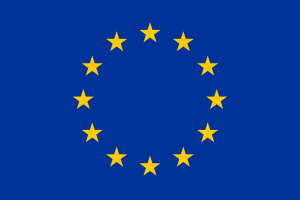RELATIONS WITH THE EU
The European Union and Montenegro
Montenegro developed a prosperous future to be a Member State of the European Union. We share these aspirations of the citizens of Montenegro. Combining the resources of the European Union, we are assisting the institutions at all levels, the business community, civil society and citizens to make this EU future happen.
Political Relations
Negotiating for the EU Membership
Montenegro is a candidate country to be a member of the EU. Its European perspective was reaffirmed by the Council in June 2006 after the recognition of the country's independence by the EU Member States.
On 15 October 2007 Montenegro signed a Stabilisation and Association Agreement (SAA) and an Interim Agreement on trade and trade-related issues. The latter entered into force on 1 January 2008 while the SAA entered into force on 1 May 2010. By the act of signing the Stabilisation and Association Agreement, Montenegro formally agreed on an association with the European Community and its Member States, thereby accepting responsibility for its European future.
In 2008, the new country applied for EU membership. In 2010, the Commission issued a favourable opinion on Montenegro's application, identifying 7 key priorities that would need to be addressed for negotiations to begin, and the Council granted its candidate status.
In December 2011, the Council launched the accession process with a view to opening negotiations in June 2012.
The accession negotiations with Montenegro started on 29 June 2012. After eight years of accession negotiations, all the 33 screened chapters have been opened, of which 3 are provisionally closed.
Economic Relations, Trade & Investments
The EU is the biggest foreign donor to Montenegro
Since 2007, the EU has provided around 1.2 Billion euro non-repayable grants directly to Montenegro. In addition Montenegro has benefitted from a wide range of regional programmes for the Western Balkans. The long-standing financial assistance has been spent on programmes and projects which fostered the development and concrete reforms, thus contributing to the well-being of citizens in many areas.
The history of the partnership dates back to 2001 through CARDS or Community Assistance for Reconstruction, Development and Stabilisation Programme. In 2006, the CARDS Programme was replaced by the Instrument for Pre-accession (IPA) which ran until 2013. The IPA was followed by the IPA II which will bring Montenegro 270 million in grants in the period from 2014-2020. The IPA II Programme is focused on the key areas which should facilitate Montenegro’s preparation for its membership in the European Union.
COVID-19 Assistance
Solidarity in Action
The EU’s financial support is helping protect the health and save the jobs of thousands of Montenegrin citizens. Since the outbreak of the COVID-19 pandemic, the EU has provided over €115 million in grants and favourable loans. The EU donated 100 respirators and over 1 million pieces of protective health equipment, while EU funds will be used for building two new clinics and refurbishing numerous laboratories in the country.
Between May and August 2021, over 42,000 doses of vaccines were delivered to Montenegro to help to accelerate vaccination among health care workers and other vulnerable groups. This comes on top of the vaccines Montenegro got via the COVAX Facility, where the EU is among the top donors.
The EU is also fully committed to rebuilding the economy. This is the purpose of the Economic and Investment Plan for the Western Balkans, which was adopted in 2020. With a substantial amount of up to EUR 28 billion, this plan has the potential to make the Western Balkans much more attractive for investments and change the realities on the ground for the people of the region. The plan will strengthen the infrastructure, create jobs, boost growth potential for local businesses, improve the lives of Montenegrin citizens and contribute to a more resilient future.
